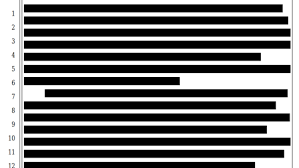Ever ask your lawyer a question and get a response like: “That’s a good question. That area of the law is quite complex. We’ll have to do some research and prepare a memo and then get back to you.”
If you haven’t, that’s good. If you have, well, I feel for you. A memo is not always the answer.
A legal memo can be a good thing. It could summarize your question effectively, canvas the law quickly, and answer your question efficiently. This can be in one page for an easy question, or several pages for a hard question. It could be a blueprint for litigation, or a roadmap for a going public transaction. Yes, some memos do carry their weight.
But many don’t. Many of them go off the rails, down every researchable rabbit hole, well outside the scope of what’s material. A question that may take one person a couple of hours becomes twenty hours of three people’s time. And time is money.
My clients are mostly start-ups. They don’t have big budgets. Legal is important, but so is sales, marketing, distribution, tech and HR. So when I get a question that I can’t answer immediately, here’s my internal memo for how to give a great answer:
- Buy time. Lawyers don’t know everything. But we know where to look. It can be tempting to answer if you’re reasonably sure, or if the question-asker needs a response right away. But that’s high risk. Buy a bit of time, and set expectations for when they’ll get the answer.
- Brainstorm in a Google Doc. Create a (messy) list of things that can affect the answer. Laws. Cases. Policy interpretation. Something similar that happened to another client and how it turned out. Then leave it, re-open it another day, and start turning that (messy) list into neat sentences. Share a narrow portion with someone in the office that may know more than you. Figure out the answer.
- Don’t write a memo.
- Instead, prepare an e-mail. I like to start with the answer. “You’re start-up is not considered a Money Services Business. Here’s why.” Use point form. No more than five points. Bold the important stuff. Include hyperlinks to relevant backup. Include your assumptions. Finish it by offering to chat it through over the phone.
- Closing call. On that call, have your brainstorm document handy to back you up.
Clients want answers. But an answer is different from an explanation. Before you dust off that firm memo letterhead, consider, depending on the context, whether the above approach could be more effective.Want to learn more?


